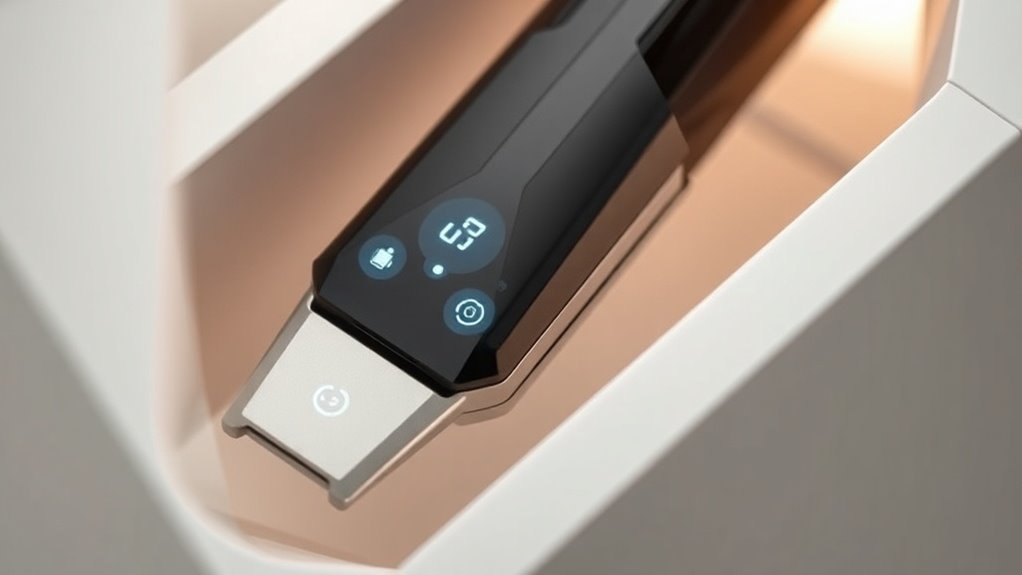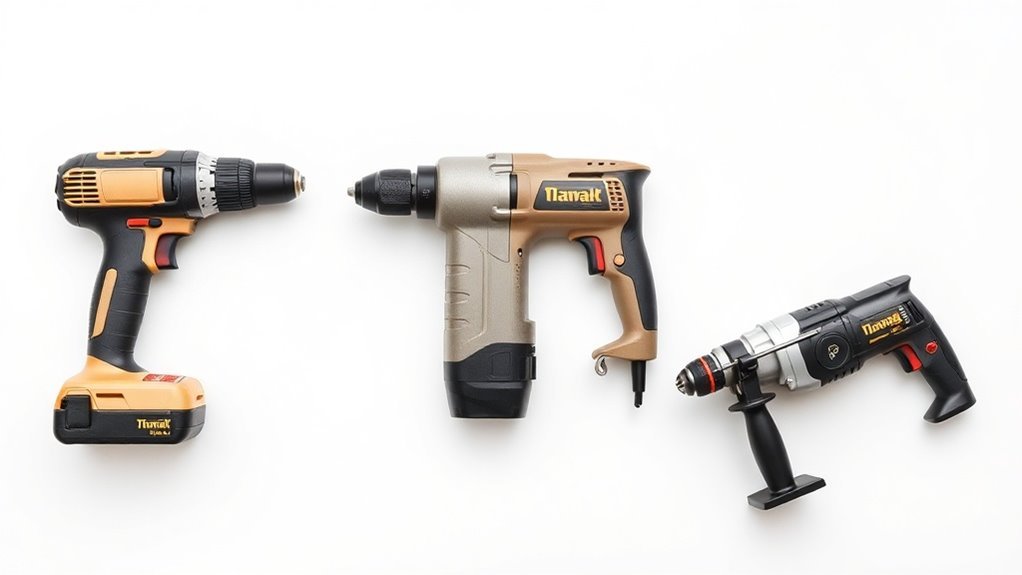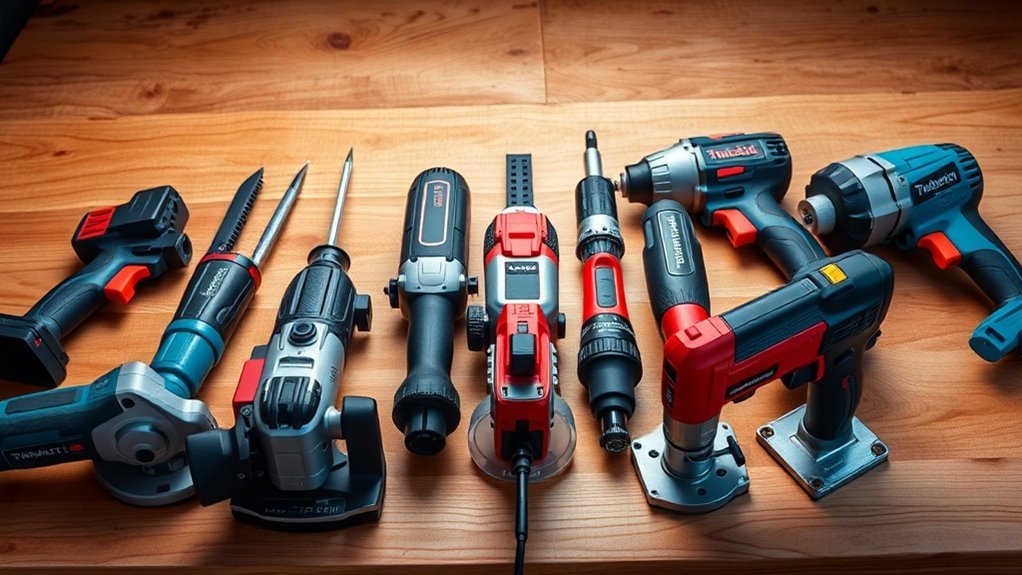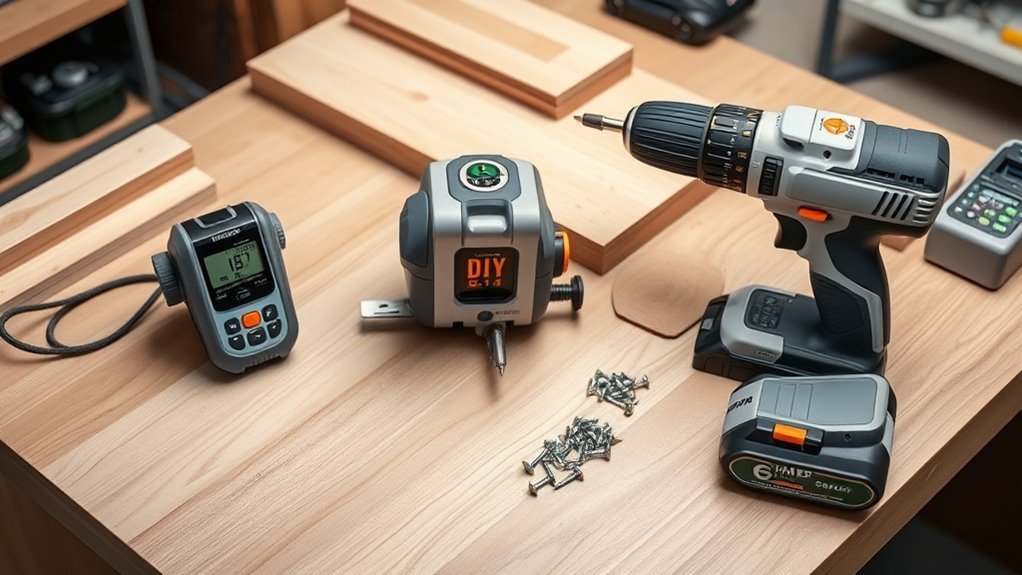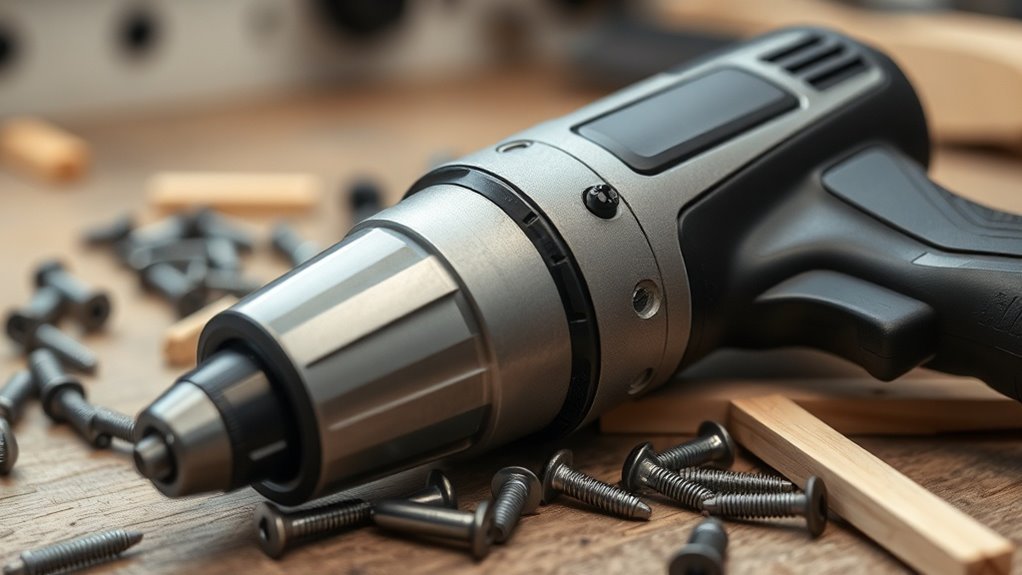Angle Grinder Attachments and Their Uses
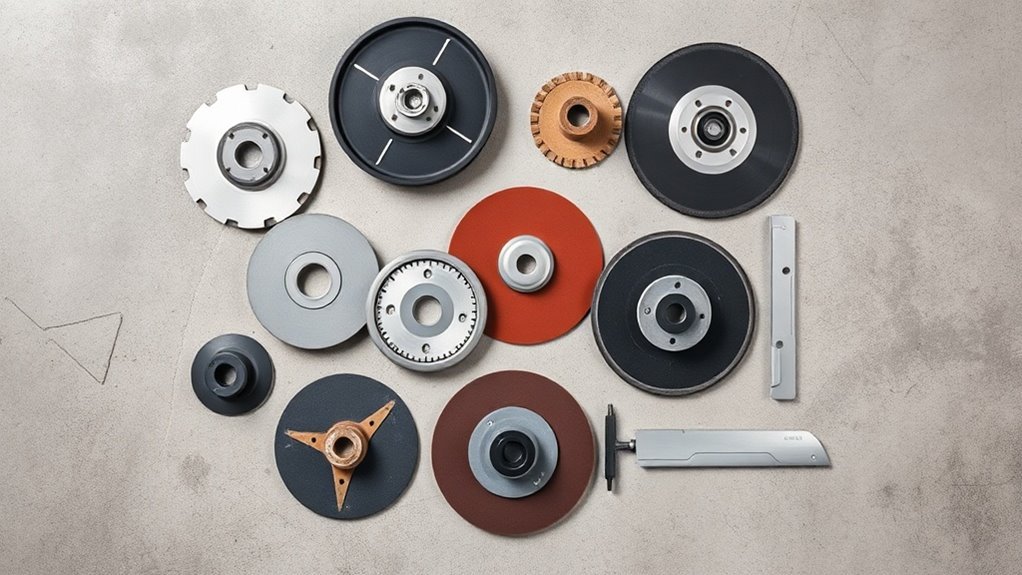
Angle grinder attachments can greatly boost your DIY projects. When you need to cut materials, consider using a diamond blade for concrete or metal cutting discs for precision. For grinding, opt for coarse wheels for removal or flap discs for blending edges. Polishing pads can give you that high-gloss finish. If you’re tackling sanding and finishing, specialized pads can help prepare surfaces. Stick around to discover even more benefits and tips for using your angle grinder effectively.
Key Takeaways
- Diamond blades are ideal for making straight cuts in concrete and stone materials.
- Metal cutting discs provide precision cutting for steel and aluminum applications.
- Grinding wheels remove material quickly using coarse grit, suitable for heavy-duty tasks.
- Flap discs shape and blend edges with medium grit for smoother finishes and transitions.
- Sanding pads and foam pads enable efficient preparation and finishing of various surfaces like wood and metal.
Understanding Angle Grinder Basics
Angle grinders are versatile power tools that can transform your DIY projects. They’re designed to tackle a variety of tasks, from cutting to grinding and polishing.
Understanding the basic components is key to using them effectively. You’ve got the motor, which powers the tool, and the spindle, where you attach your desired disc. The safety guard protects you from sparks and debris, so always keep it in place.
Master the essential parts: the motor powers, the spindle attaches discs, and the safety guard shields against sparks and debris.
Also, be mindful of the power source; corded models offer consistent performance, while cordless versions provide portability.
Familiarizing yourself with these basics will help you maximize the tool’s potential, ensuring you stay safe while achieving impressive results.
Cutting Attachments: Types and Applications
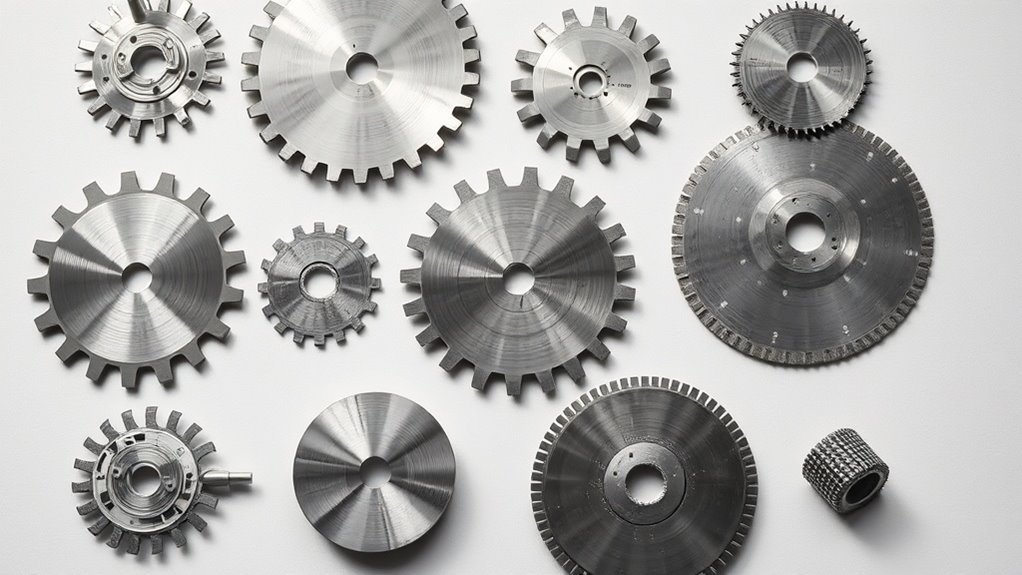
When it comes to maximizing the cutting capabilities of your grinder, choosing the right attachment is essential. There are several types specifically designed for different tasks.
For straight cuts, you’ll want a diamond blade, which easily slices through tough materials like concrete and stone. If you’re working with metal, a metal cutting disc is your best bet; it’s designed to handle steel and aluminum with precision.
Additionally, there are specialized blades, such as those for tile or masonry, offering the right edge for specific materials. Always guarantee that the attachment fits your grinder’s specifications and remember to prioritize safety by wearing protective gear.
With the correct cutting attachment, you’ll achieve precise results in your projects efficiently.
Grinding and Polishing Attachments
While choosing the right attachment for grinding and polishing can seem intimidating, it’s essential for achieving a smooth finish on various surfaces. Grinding attachments typically come in various grits, allowing you to effectively remove material and shape edges. Polishing attachments, on the other hand, are designed to give you that high-gloss finish on metals and stones.
Here’s a quick reference for different attachments and their uses:
| Attachment Type | Purpose | Grit Level |
|---|---|---|
| Grinding Wheel | Material removal | Coarse |
| Flap Disc | Shaping and blending edges | Medium |
| Polishing Pad | High-gloss finish | Fine |
With the right tools, you’ll enhance your projects and achieve professional results every time.
Sanding and Finishing Accessories
Sanding and finishing accessories are essential for elevating the quality of your projects, ensuring a smooth and polished surface.
When you attach a sanding pad to your angle grinder, it turns a powerful tool into a versatile sander, perfect for preparing wood, removing old paint, or smoothing metal surfaces. You’ll find various grits available, allowing you to choose the right level of aggressiveness for your task.
Consider using foam pads for a softer touch or specialized sanding discs for intricate detail work. With these accessories, you can achieve that pro-level finish, saving time and effort in your crafting or renovation efforts.
Safety Tips for Using Angle Grinder Attachments
Using angle grinder attachments can be incredibly effective, but it’s crucial to prioritize safety to prevent injuries.
First, always wear appropriate personal protective equipment, including safety goggles, gloves, and hearing protection. Make sure your work area is clean and free of flammable materials.
Before you start, inspect your attachments for wear or damage, as using a defective attachment can lead to accidents. Maintain a firm grip on the grinder and keep it stable to avoid kickback.
Inspect attachments for wear before use to prevent accidents, and maintain a firm grip to avoid kickback.
Always turn off the grinder and unplug it before changing attachments. Finally, never bypass safety features; they’re there for a reason. Additionally, it’s important to stay focused and avoid distractions to ensure a safe working environment.
Questions
Can Angle Grinders Be Used for Homemade Projects?
Absolutely, you can use angle grinders for homemade projects! They’re versatile tools that help with cutting, grinding, and polishing various materials, making them perfect for DIY enthusiasts looking to tackle creative tasks around the house.
How Do I Choose the Right Attachment for My Task?
Imagine transforming rough materials into smooth surfaces. To choose the right attachment, assess your project’s needs. Consider the material type, desired finish, and compatibility. Each attachment’s unique purpose can make your task easier and more efficient.
Are There Any Angle Grinder Brands to Avoid?
Yes, you should be cautious with off-brand or lesser-known manufacturers. They often compromise on quality, leading to poor performance or safety issues. Stick with well-reviewed brands for reliability and efficiency in your tasks.
What Is the Lifespan of Angle Grinder Attachments?
The lifespan of angle grinder attachments varies, but with proper maintenance, they can last anywhere from a few months to several years. It’s essential to avoid overuse and keep them clean to maximize durability.
Can I Use Angle Grinder Attachments on a Different Tool?
You can’t make a silk purse out of a sow’s ear; angle grinder attachments are typically designed for specific tools. Using them on different equipment might not yield satisfactory results and could even be unsafe.
Conclusion
In summary, mastering angle grinder attachments can turn you into a DIY legend, transforming any project into a masterpiece! With the right accessories, you can cut, grind, and polish like a pro. Just remember to prioritize safety and follow guidelines to avoid mishaps. So, whether you’re tackling tough materials or achieving that perfect finish, your angle grinder is your trusty sidekick ready to help you conquer any challenge. Now, go set free your creativity!


